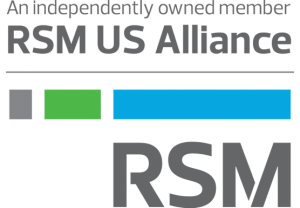Insights
Impact of India's new dividend withholding tax on U.S. investors
ARTICLE | November 09, 2020
Authored by RSM US LLP
With the aim of making the capital market more attractive and increasing foreign investments, the Indian government proposed to abolish the dividend distribution tax (DDT) on Feb. 1, 2020 when it announced the Union Budget for fiscal year 2020-2021[i]. On March 27, 2020, with the passage of the Finance Act, 2020 the DDT was abolished and replaced with a classical withholding tax (WHT) regime. As a result, effective April 1, 2020, dividends declared by an Indian company are subject to WHT and taxed in the hands of the investors. This represents a significant shift in burden of taxation from the company paying the dividend to the recipient of the dividend. But it also provides a much needed update to the system of taxation of dividends that should allow India to compete more effectively for foreign capital investments on an equal footing to that of its major trading partners.
Treatment of dividends under prior law
The DDT was introduced in Indian tax law in 1997. Under the distribution tax regime, DDT was paid by the company distributing dividends and the dividend income was exempt in the hands of the shareholders. This was considered an e?cient mechanism to collect tax on distributed income of the company.
Dividend distributions were taxable at source, therefore all domestic companies were required to pay tax on dividends at the rate of 15% plus Education Cess[ii] and Surcharge[iii] taxes resulting in a general effective tax rate of 20.56%. While the actual payment of the DDT was made by the company distributing the dividends, the economic consequences of DDT was also borne by the shareholders, as it was paid from accumulated profits of the company which impacted the amount available for dividend payout.
While the DDT relived the shareholders from the incidence of direct taxation, foreign investors were not able to claim benefits of a reduced tax rate available in an applicable income tax treaties because the tax was not imposed on the shareholder.
Furthermore, foreign investors were often unable to claim a tax credit in their home jurisdiction, thereby making the dividend subject to double taxation.
Current law treatment of dividends
As noted previously, the Finance Act 2020 abolished DDT and replaced it with dividend WHT. Under the revised Indian domestic law, Indian companies are now required to withhold 20% for dividends declared/paid to non-resident investors. In addition to WHT there is a Cess and Surcharge assessment similar to that imposed under DDT. As a result, effective withholding tax rates including Cess and Surcharge would be as noted in below.
| Dividend amount | Effective withholding tax rate |
| Dividend does not exceed INR[iv] 10 million | 20.80% (20%, plus 4% Cess) |
| Dividend exceeds INR 10 million but does not exceed INR 100 million | 21.216% (20%, plus 4% Cess and 2% Surcharge) |
| Dividend exceeds INR 100 million | 21.84% (20%, plus 4% Cess and 5% Surcharge) |
Dividend withholding
One of the key advantages of the dividend WHT regime for non-resident shareholders is the ability to potentially claim lower dividend withholding rates under a double taxation avoidance agreement (DTAA) with India. Furthermore, foreign investors can potentially take a foreign tax credit for the withholding taxes paid in their home country. No surcharge and/or Cess is applied when DTAA rates are applicable.
The dividend withholding rate under India’s tax treaty with the United States is 15% for corporate shareholders that own at least 10% of the voting stock of the company paying the dividends. For all other eligible shareholders the withholding tax rate is 25% under the treaty. In this instance it may be advantageous to apply the lower treaty rates at source so shareholders do not have to seek out refunds and to enhance the liquidity of corporate payors. It is also worth noting that shareholders subject to U.S. taxation on a dividend from an Indian corporation generally may claim a credit for WHT against their U.S. tax liability from the dividend income subject to certain limitations.
However, it is important to note and highlight that a U.S. corporate shareholder may qualify for a 100% dividend received deduction (DRD) for dividends received from Indian corporations if certain conditions apply. If the DRD applies to a dividend, a U.S. shareholder may not claim a credit for foreign taxes paid so it is very important to reduce the withholding tax as much as possible (e.g, via a treaty exemption).The 100% DRD is only available to U.S. domestic C corporations that are neither real estate investment trusts nor regulated investment companies. Domestic partnerships, S corporations and individuals are not considered eligible U.S. shareholders.
Tax planning opportunity
The new dividend withholding tax law makes it possible for nonresident investors to take advantage of the reduced dividend withholding tax rate under a favorable tax treaty with India, provided that the company which holds the shares of the Indian company is a qualified resident of the jurisdiction concerned[v] and satisfies India's domestic law requirements for tax treaty protection. Under those rules, a foreign holding company's main purpose should be to serve a meaningful business purpose other than saving or avoiding Indian tax. While the current tax law lacks guidance on this point, India's case law suggests that an active business function or an investment holding function for subsidiaries in multiple jurisdictions are helpful factors to support having a meaningful business purpose.
India has also in recent years has moved to update tax treaties that were deemed to contain treaty provisions that encouraged tax treaty shopping by nonresident investors into India through holding company structures, especially those established in Mauritius and Singapore.
However, with the introduction of the withholding tax it becomes relevant again for U.S. investors to consider holding their investments in India through a company located in a favorable tax treaty country, as this could reduce the Indian dividend withholding tax, assuming the above substance conditions and those of the treaty are satisfied. India has favorable tax treaties with Cyprus, France, Hong Kong, Malaysia, Mauritius, the Netherlands, Qatar, Singapore and the United Arab Emirates.
Indian withholding tax compliance
In order to claim the benefit of the favorable tax treaty withholding tax rate, U.S. nonresident investors need to provide the following items to the payor of the dividend in India:
- U.S. Tax Residency Certificate: Form 6166
- Permanent Account Number (PAN), akin to a US Employer Identification Number (EIN)
- Indian Tax Form 10F[vi]
- A certified declaration of no PE in India by the recipient
Claiming the benefit of a favorable tax treaty withholding tax rate will require the nonresident investor of the dividend to file an Indian income tax return. For example, foreign companies are required to file Form ITR-6. A PAN is a mandatory requirement to file an income return in India.
However, in the absence of a PAN, the Indian payor of the dividend is required to withhold tax at the statutory rate of 20% and applicable Cess and surcharge. In this case, the nonresident investor is not liable to file an Indian income tax return in India.
While a PAN is not mandatory, it is a requirement to claim tax treaty withholding benefit and is mandatory in order to file income taxes in India. For example, a PAN would be required if the payor in India withheld at the statutory rate and the nonresident wanted to claim a refund of the excess taxes paid over the tax treaty rate.
The abolition of DDT with previously reduced corporate income tax rate from 30% to 22% and with the advantage of favorable tax treaties, the effective rate on business income in India is reduced significantly. Although the reforms may increase the compliance burden on non-resident U.S. investors, it’s a welcome change and aligns the taxation of dividends with the approach in many countries. The changes also provide foreign investors with an opportunity to structure their investments more advantageously and efficiently.
[i] Indian tax year is based on a fiscal year - April 1, to March 31,, 2020.
[ii] Cess is tax on tax and usually levied for the specific purposes.
[iii] A Surcharge is an added tax that is payable over and above the income tax. It is charged on the amount of income tax and not the total income
[iv] INR: Indian Rupee
[v] A valid tax residence certificate issued by the competent tax authority of that jurisdiction may support a claim of qualified residence status,.
[vi] The purpose of Form10F is to establish your identity, that you are an Indian citizen or a non-resident of India, and pay taxes in the country where you are resident.
Let's Talk!
Call us at +1 213.873.1700, email us at solutions@vasquezcpa.com or fill out the form below and we'll contact you to discuss your specific situation.
This article was written by Mukesh Patel and originally appeared on Nov 09, 2020.
2022 RSM US LLP. All rights reserved.
https://rsmus.com/insights/services/business-tax/impact-of-indias-new-dividend-withholding-tax-on-us-investors.html
The information contained herein is general in nature and based on authorities that are subject to change. RSM US LLP guarantees neither the accuracy nor completeness of any information and is not responsible for any errors or omissions, or for results obtained by others as a result of reliance upon such information. RSM US LLP assumes no obligation to inform the reader of any changes in tax laws or other factors that could affect information contained herein. This publication does not, and is not intended to, provide legal, tax or accounting advice, and readers should consult their tax advisors concerning the application of tax laws to their particular situations. This analysis is not tax advice and is not intended or written to be used, and cannot be used, for purposes of avoiding tax penalties that may be imposed on any taxpayer.
RSM US Alliance provides its members with access to resources of RSM US LLP. RSM US Alliance member firms are separate and independent businesses and legal entities that are responsible for their own acts and omissions, and each is separate and independent from RSM US LLP. RSM US LLP is the U.S. member firm of RSM International, a global network of independent audit, tax, and consulting firms. Members of RSM US Alliance have access to RSM International resources through RSM US LLP but are not member firms of RSM International. Visit rsmus.com/about us for more information regarding RSM US LLP and RSM International. The RSM logo is used under license by RSM US LLP. RSM US Alliance products and services are proprietary to RSM US LLP.

Vasquez & Company LLP is a proud member of the RSM US Alliance, a premier affiliation of independent accounting and consulting firms in the United States. RSM US Alliance provides our firm with access to resources of RSM US LLP, the leading provider of audit, tax and consulting services focused on the middle market. RSM US LLP is a licensed CPA firm and the U.S. member of RSM International, a global network of independent audit, tax and consulting firms with more than 43,000 people in over 120 countries.
Our membership in RSM US Alliance has elevated our capabilities in the marketplace, helping to differentiate our firm from the competition while allowing us to maintain our independence and entrepreneurial culture. We have access to a valuable peer network of like-sized firms as well as a broad range of tools, expertise and technical resources.
For more information on how Vasquez & Company LLP can assist you, please call +1 213.873.1700.
Subscribe to receive important updates from our Insights and Resources.
